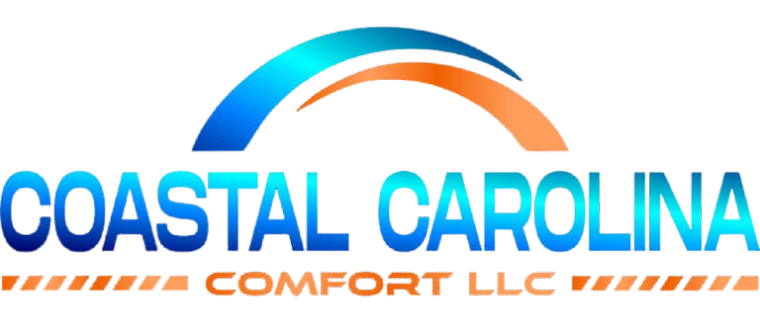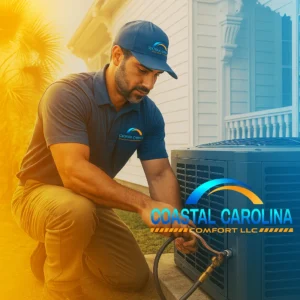If your home never seems to stay at a steady temperature or you’re dealing with sky-high energy bills, the cause might be something hidden right inside your walls—your air ducts. When these ducts aren’t sealed properly, air escapes before it even reaches your rooms. That means your HVAC system has to work harder to keep you comfortable, which ends up costing more and doing less.
Summers in Charleston can be hot and humid, and no one wants to deal with rooms that feel stuffy or uncomfortable. Checking whether your air ducts are sealed is one of the simplest ways to improve airflow, boost comfort, and cut down on your HVAC system’s workload. Here are some easy ways to tell if your ducts are leaking and how that might be affecting your home.
Signs Your Air Ducts Are Leaking
If your air ducts have gaps or loose connections, they can let a lot of air out before it even gets to your living space. That may not sound like a big deal, but it can create all sorts of issues. Here are some signs that your ducts may be leaking:
1. Your energy bill keeps rising
When air leaks out of your ductwork, your HVAC system has to run longer to make your house feel cool or warm. That extra run time burns more energy and can make your monthly bills go up without any noticeable benefit. If your usage habits haven’t changed, but your costs have, leaky ducts could be part of the problem.
2. You feel hot or cold spots throughout the house
A well-functioning HVAC system should keep the temperature fairly even from room to room. If you start noticing that one bedroom is cooler than the others or your living room feels warmer than your kitchen, it might be a sign that air is escaping from the ducts before reaching certain areas.
3. Indoor air feels dusty or stale
Leaks can let dirty air from places like attics or crawlspaces mix with the clean, conditioned air inside the ducts. That means more dust, allergens, or even smells can be circulated through your home, especially when the system kicks on. If more frequent dusting or sneezing has become the norm, it’s worth checking the ductwork.
One homeowner in Charleston told us the upstairs rooms were always warmer than downstairs, no matter how low the thermostat was set. After a professional inspection, they found that a few poorly sealed ducts in the attic were letting cool air escape before it reached the top floor. Once those spots were sealed properly, the difference was immediate—better airflow, even temperatures, and a noticeable drop in the monthly utility bill.
Visual And Physical Inspections
You don’t always need special equipment to figure out if there’s a leak. Sometimes just using your eyes and hands can point you in the right direction. Too many homeowners overlook these simple checks, even though they can tell you a lot about how your air is moving.
Start by inspecting any exposed ductwork you have access to. This might be in your attic, basement, or crawlspace. Here’s what to look for:
– Loose joints or disconnected sections
– Gaps where duct pieces meet
– Flex ducts with tears or crumpled areas
– Old or dried-out tape around seams
Look closely at any areas where the ducts change directions or branch out. These angles are common weak points where leaks happen.
Next, run your HVAC system and let the air start flowing. Slowly move your hand along the seams and edges of the ducts. If you feel air blowing out where it shouldn’t be or hear any kind of whistling noise, that’s a pretty good sign of a leak.
Even though this kind of inspection is basic, it can still give you a good idea if something’s clearly wrong. If you don’t see anything obvious but are still having comfort or airflow issues, that’s usually when it makes sense to bring in a professional for testing. Some leaks are small or hidden in parts of the system you just can’t reach easily.
Professional Methods For Detecting Leaks
While a quick inspection can highlight obvious problems, some duct leaks need a more thorough approach to pinpoint accurately. Professionals use advanced tools and methods to find and measure leaks, making sure nothing slips through unnoticed.
The duct blower test is a common technique used in this process. It involves sealing off the registers and supplying the duct system with a calibrated fan. By doing this, technicians can detect the amount of air leakage within the system. This method quantifies the leak level, giving a clearer picture of how much air is escaping.
Infrared thermography offers another detection method. It uses thermal imaging cameras to spot temperature differences in ductwork. These cameras can see areas where air might be escaping because they appear warmer or cooler than the rest of the ducts. This visual aid helps technicians identify and address leaks much more accurately than by sight alone.
Using these methods, experts can provide a comprehensive leak survey for your home. This thorough analysis ensures no issues go unnoticed, creating a solid plan for repairs that improve your HVAC system’s overall performance.
Benefits Of Proper Air Duct Sealing
Making sure your air ducts are sealed correctly can seem like a small task, but it comes with plenty of benefits. When ducts are well sealed, your HVAC system can do its job more effectively.
One of the main perks is better energy efficiency. When air isn’t leaking out, your HVAC system doesn’t have to work overtime to maintain a consistent indoor temperature. This helps reduce energy use over time, which usually shows up as lower monthly bills.
You’ll also enjoy more consistent indoor comfort. With fewer leaks, air flows through the system as intended, making sure every room gets the same level of conditioning. No more cold spots in one room and warm patches in another.
On top of that, sealed ducts help protect your indoor air quality. Without gaps or cracks, dirty air from crawlspaces or attics stays out of your system. That means fewer allergens, contaminants, or weird smells floating around your house. For Charleston’s humid and pollen-rich climate, that’s a serious bonus.
How Coastal Carolina Comfort Can Help
Having served the Charleston area for years, our team at Coastal Carolina Comfort knows how local conditions can impact your HVAC system. From extreme summer heat to moisture-heavy crawlspaces, Charleston homes face unique challenges that make proper air duct sealing especially important.
We specialize in diagnosing air duct issues using professional tools and proven methods. Whether you’ve noticed temperature imbalances, rising utility costs, or just want peace of mind, we’re here to help. Our team delivers thorough inspections, identifies leak points, and uses trusted sealing techniques to restore performance and comfort.
We treat every home like it’s our own, making sure the work we do holds up across the seasons. If you’re unsure whether your air ducts are performing as they should, it might be time for a closer look.
Sealing the Deal on Comfort and Efficiency
At the end of the day, properly sealed air ducts mean less stress on your HVAC system and more comfort for you. They help keep the entire home working the way it should. Whether it’s escaping heat in an attic or creeping moisture in a crawlspace, duct leaks don’t fix themselves and usually lead to bigger issues if ignored.
Regular inspections, some simple checks, and trusted help from our pros at Coastal Carolina Comfort can make a real difference. Reliable airflow and good indoor air quality are key to living comfortably year-round in Charleston.
If you’re dealing with uneven temps, dusty air, or surprise energy bills, your ductwork could be the reason. Fixing it now means fewer headaches later, and a home that finally feels just right.
If you’re ready to make your home more comfortable and efficient, consider the benefits of professional air duct sealing. Proper sealing can keep your HVAC system running smoothly and improve the air you breathe every day. For dependable service and expert care, reach out to Coastal Carolina Comfort to get started on a more comfortable home today.


